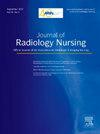Bringing New Life Into Retired Lead: Evaluating the Effectiveness of Using Lead Aprons as Weighted Blankets to Reduce State Anxiety for Patients in Interventional Radiology
Q3 Nursing
引用次数: 0
Abstract
Background
Heightened levels of anxiety are often found in patients awaiting procedures. Increased levels of anxiety can result in longer procedural times, lengthened recovery, and decreased patient satisfaction. Scant research has been performed in the use of weighted blankets or alternative forms of weighted blankets for adults in a hospital setting.
Purpose
This research study explored the efficacy of using of a lead apron repurposed into a weighted blanket as a nonpharmacological tool to reduce anxiety in outpatients awaiting procedures in an interventional radiology department.
Method
This research study used a mixed methods design to gather quantitative and qualitative data. A convenience sample of 60 patients was recruited from an outpatient ambulatory unit. Participants were then randomly assigned 30 participants randomized to a control (standard hospital blanket) and an intervention group (15 lb. lead apron).
Findings
Participants who received the retired lead apron simulating a weighted blanket demonstrated a lower STAI-6 inventory score (p < .001) along with improvements in systolic blood pressure, heart rate, and respiratory rate (p < .001) compared to the control group who received a standard hospital blanket.
Discussion
Based on the STAI-6 inventory scores, anxiety levels were significantly reduced after using a 15-pound lead apron to simulate a weighted blanket. The results of this study indicated that repurposing retired lead aprons into weighted blankets is a viable option to use as a nonpharmacological adjunct tool to reduce state anxiety in a preprocedural patient.
为退役铅带来新的生命:评估使用铅围裙作为加重毯减轻介入放射患者状态焦虑的有效性
在等待手术的患者中经常发现焦虑水平升高。焦虑程度的增加会导致手术时间延长,恢复时间延长,患者满意度下降。在医院环境中对成人使用加重毛毯或替代形式的加重毛毯进行了很少的研究。目的:本研究探讨了将铅围裙改造成加重毯作为一种非药物工具来减少介入放射科门诊候诊患者焦虑的效果。方法本研究采用混合方法设计,收集定量和定性资料。从门诊门诊部门招募了60名患者作为方便样本。然后将30名参与者随机分配到对照组(标准医院毯子)和干预组(15磅铅围裙)。研究结果:与接受标准医院毯子的对照组相比,接受模拟加重毯子的退休铅围裙的参与者表现出较低的STAI-6库存评分(p < .001)以及收缩压、心率和呼吸频率的改善(p < .001)。根据STAI-6量表得分,使用15磅铅围裙模拟加重毯子后,焦虑水平显著降低。这项研究的结果表明,重新利用退役铅围裙加重毛毯是一个可行的选择,作为一种非药物辅助工具,以减少术前患者的状态焦虑。
本文章由计算机程序翻译,如有差异,请以英文原文为准。
求助全文
约1分钟内获得全文
求助全文
来源期刊

Journal of Radiology Nursing
Nursing-Advanced and Specialized Nursing
CiteScore
0.80
自引率
0.00%
发文量
95
审稿时长
57 days
期刊介绍:
The Journal of Radiology Nursing promotes the highest quality patient care in the diagnostic and therapeutic imaging environments. The content is intended to show radiology nurses how to practice with compassion, competence, and commitment, not only to patients but also to the profession of nursing as a whole. The journal goals mirror those of the Association for Radiologic & Imaging Nursing: to provide, promote, maintain , and continuously improve patient care through education, standards, professional growth, and collaboration with other health care provides.
 求助内容:
求助内容: 应助结果提醒方式:
应助结果提醒方式:


